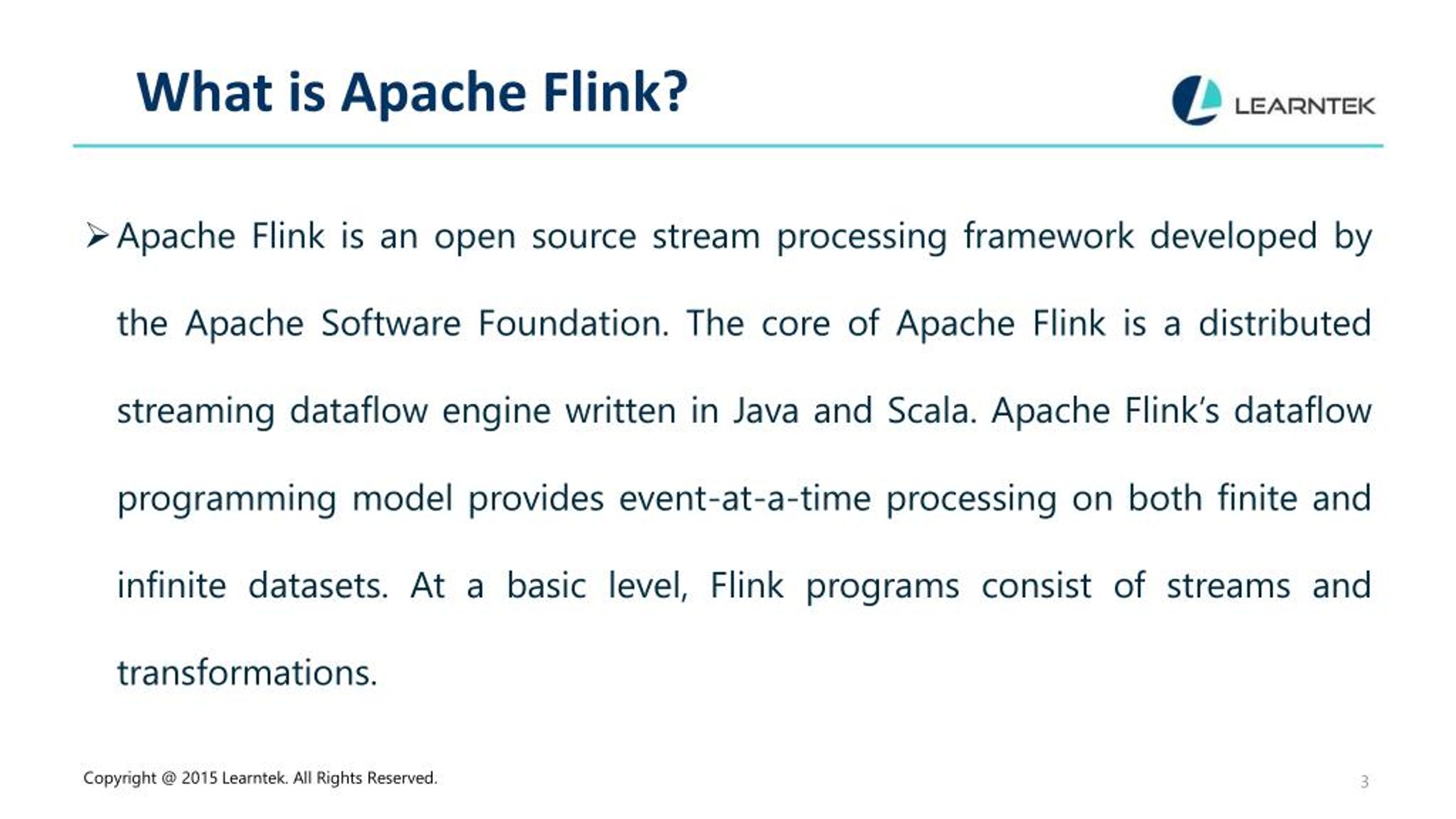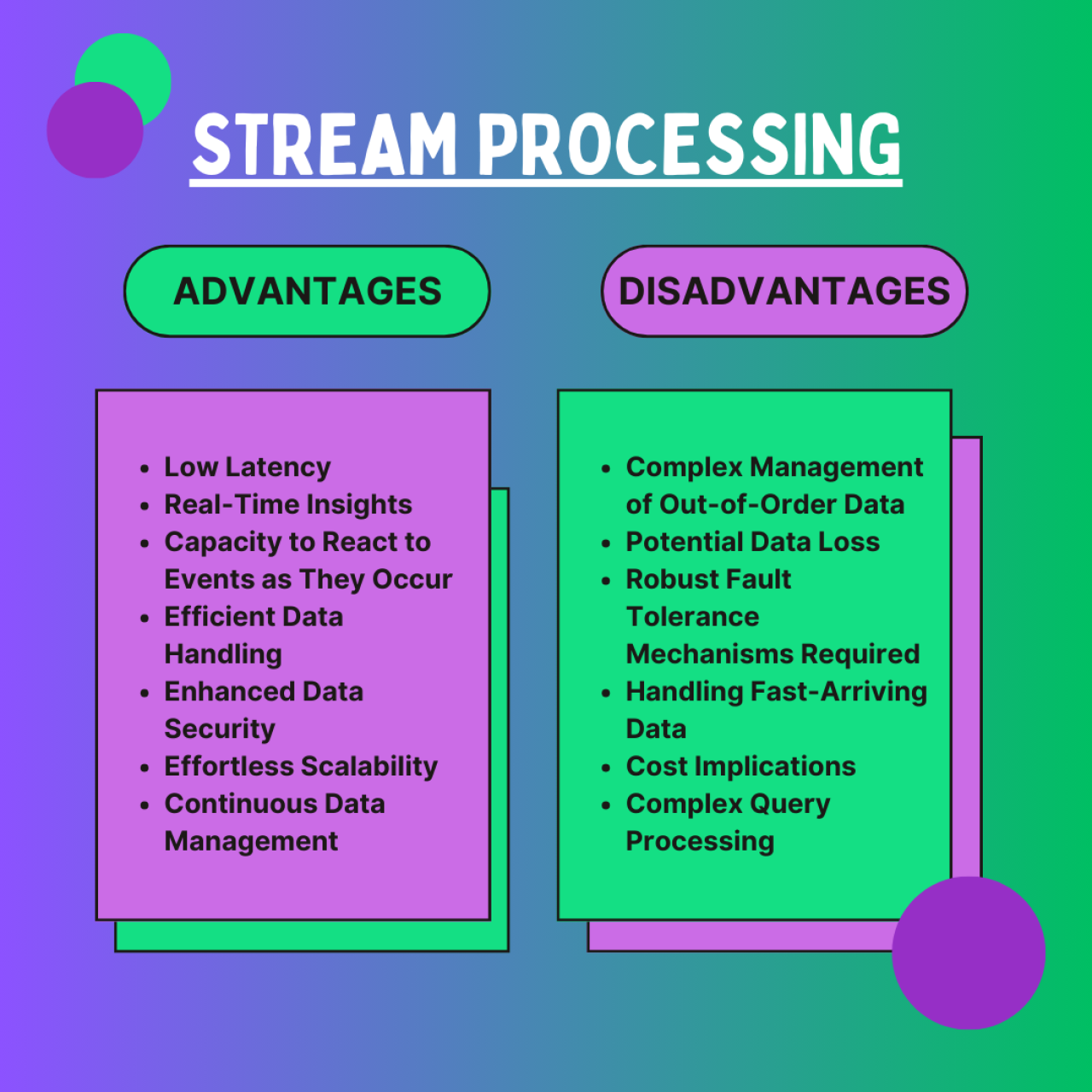Apache Flink: A High-Throughput, Low-Latency Stream Processing Framework
Apache Flink is a high-throughput, low-latency stream processing framework that can handle large volumes of data in real time. It is designed for applications that require high throughput and low latency, such as fraud detection, real-time analytics, and IoT data processing.

Apache Flink Meetup: Sanjar Akhmedov - Joining Infinity – Windowless - Source www.slideshare.net
Editor's Notes: Apache Flink: A High-Throughput, Low-Latency Stream Processing Framework" have published today date". Give a reason why this topic important to read.
We have analyzed, dug information, made Apache Flink: A High-Throughput, Low-Latency Stream Processing Framework we put together this guide to help target audience make the right decision.
Key differences or Key takeaways:
| Feature | Apache Flink |
|---|---|
| Throughput | High |
| Latency | Low |
| Scalability | Horizontal |
| Fault tolerance | Built-in |
Main article topics:
- Introduction to Apache Flink
- Benefits of using Apache Flink
- How to use Apache Flink
- Case studies of Apache Flink in use
FAQ
This section addresses frequently asked questions and misconceptions regarding Apache Flink, a widely recognized stream processing framework known for its high throughput and low latency capabilities.
Question 1: What distinguishes Apache Flink from other stream processing systems?
Apache Flink's unique features include its ability to process both bounded and unbounded data streams with high throughput and low latency. Additionally, Flink's fault-tolerance mechanisms ensure data integrity and processing continuity even in the event of system failures.
Question 2: Can Apache Flink handle a wide range of data sizes and velocities?
Yes, Apache Flink is designed to handle data streams of varying sizes and velocities. Its scalable architecture allows it to process large volumes of data efficiently, and its low-latency capabilities make it suitable for real-time applications.
Question 3: How does Apache Flink ensure data consistency and reliability?
Apache Flink employs strong consistency guarantees, ensuring that data is processed exactly once. Its fault-tolerance mechanisms, such as checkpointing and recovery, protect against data loss and system failures.
Question 4: What are the benefits of using Apache Flink for stream processing?
Apache Flink offers several benefits, including its high throughput and low latency, which make it ideal for real-time applications. Flink's fault tolerance ensures data integrity, while its scalable architecture can handle large volumes of data. Additionally, Flink's rich API and connectors simplify the development and deployment of stream processing applications.
Question 5: Is Apache Flink suitable for all types of stream processing applications?
Apache Flink is a versatile framework that can be used for a wide range of stream processing applications. It is particularly well-suited for applications that require high throughput, low latency, and fault tolerance.
Question 6: What resources are available to learn more about Apache Flink?
The Apache Flink website provides comprehensive documentation, tutorials, and examples. Additionally, there is a vibrant community of Flink users and developers who share knowledge and resources through online forums and meetups.

Apache Flink Architecture Tutorial | CloudDuggu - Source www.cloudduggu.com
Apache Flink is a powerful and reliable stream processing framework that offers high throughput, low latency, and strong data consistency guarantees. Its fault tolerance and scalability make it suitable for a wide range of applications.
To learn more about Apache Flink and its capabilities, visit the official website or engage with the active community of users and developers.
Tips
Maximizing the performance of Apache Flink: A High-Throughput, Low-Latency Stream Processing Framework requires careful consideration of operational strategies. Below are key tips for optimizing Flink applications:
Tip 1: Optimize Parallelism
Adjust the degree of parallelism to balance resource utilization and latency. Experiment with different values to find the optimal number of parallel instances.
Tip 2: Utilize Efficient Data Structures
Choose data structures that support efficient operations and minimal memory overhead. Consider using hash tables, bloom filters, and binary trees for data management.
Tip 3: Leverage Query Optimization
Optimize queries by eliminating unnecessary processing steps and identifying execution plans with minimal latency. Utilize query optimization tools or Flink's built-in optimizer.
Tip 4: Tune Resource Allocation
Allocate resources dynamically based on workload patterns. Use resource managers like YARN or Kubernetes to scale resources up or down as needed.
Tip 5: Monitor Performance Metrics
Monitor key performance metrics such as latency, throughput, and memory usage. Identify bottlenecks and implement optimizations accordingly.
By implementing these tips, you can enhance the efficiency and performance of your Flink applications, ensuring optimal utilization of resources and minimal processing latency.
Apache Flink: A High-Throughput, Low-Latency Stream Processing Framework
Apache Flink is a high-performance stream processing engine known for its high throughput and low latency.
- High-Throughput: Flink can process large volumes of data in real-time, making it suitable for demanding applications.
- Low-Latency: Flink minimizes the delay between data ingestion and processing, ensuring timely decision-making.
- Fault-Tolerant: Flink's checkpointing and recovery mechanisms ensure data integrity and application resilience.
- Scalable: Flink can be easily scaled up or down to meet changing workloads.
- Extensible: Flink offers a rich API for user-defined functions and connectors, allowing for customization and integration.
- Real-Time Analytics: Flink enables real-time data processing, empowering businesses to make informed decisions based on the latest information.
These key aspects make Apache Flink an essential tool for modern stream processing applications. Its high throughput ensures efficient data processing, while its low latency enables real-time decision-making. The fault-tolerance, scalability, and extensibility of Flink ensure reliability, adaptability, and customization. Ultimately, Flink empowers organizations to harness the power of real-time data analytics for improved operational efficiency and competitive advantage.

PPT - Apache Flink Training PowerPoint Presentation, free download - ID - Source www.slideserve.com
Apache Flink: A High-Throughput, Low-Latency Stream Processing Framework
Apache Flink is a popular open-source stream processing framework that provides high throughput and low latency for data processing. This combination makes it an ideal choice for applications that require real-time or near-real-time data processing, such as fraud detection, anomaly detection, and data analytics. Flink's high throughput enables it to handle large volumes of data, while its low latency ensures that data is processed and analyzed quickly.
Stream Processing vs. Batch Processing: Weighing the Pros and Cons - Source edgedelta.com
Flink uses a distributed architecture that allows it to scale horizontally, making it suitable for large-scale data processing. It also supports a variety of data sources, including files, databases, and streaming services. Flink's rich set of built-in operators makes it easy to develop complex data processing pipelines.
In summary, Flink's high throughput, low latency, scalability, and ease of use make it an excellent choice for a wide range of stream processing applications.
Key Insights
| Feature | Importance | Real-life Example |
|---|---|---|
| High throughput | Enables handling of large volumes of data | Fraud detection system that processes millions of transactions per hour |
| Low latency | Ensures that data is processed and analyzed quickly | Anomaly detection system that identifies suspicious activity in real time |
| Scalability | Allows for horizontal scaling to meet increasing demands | Data analytics platform that processes data from multiple sources |
| Ease of use | Facilitates development of complex data processing pipelines | Machine learning model that trains on real-time data |
Conclusion
Apache Flink is a high-throughput, low-latency stream processing framework that has become increasingly popular for applications that require real-time or near-real-time data processing. Flink's unique combination of features makes it an ideal choice for a wide range of applications, from fraud detection to data analytics.
As the demand for real-time data processing continues to grow, Flink is expected to become even more widely adopted. Its scalability, ease of use, and ability to handle large volumes of data make it an essential tool for organizations that need to process data in real time.

